
How to Use DHT22: Examples, Pinouts, and Specs
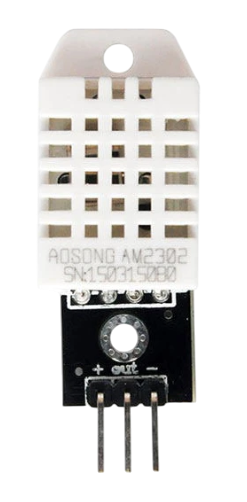
 Design with DHT22 in Cirkit Designer
Design with DHT22 in Cirkit DesignerIntroduction
The DHT22 is a digital temperature and humidity sensor that provides accurate readings of temperature in Celsius and humidity in percentage. It features a single-wire digital interface, making it easy to connect to microcontrollers like Arduino and Raspberry Pi. The DHT22 is widely used in weather stations, environmental monitoring systems, and HVAC control applications due to its reliability and ease of use.
Explore Projects Built with DHT22
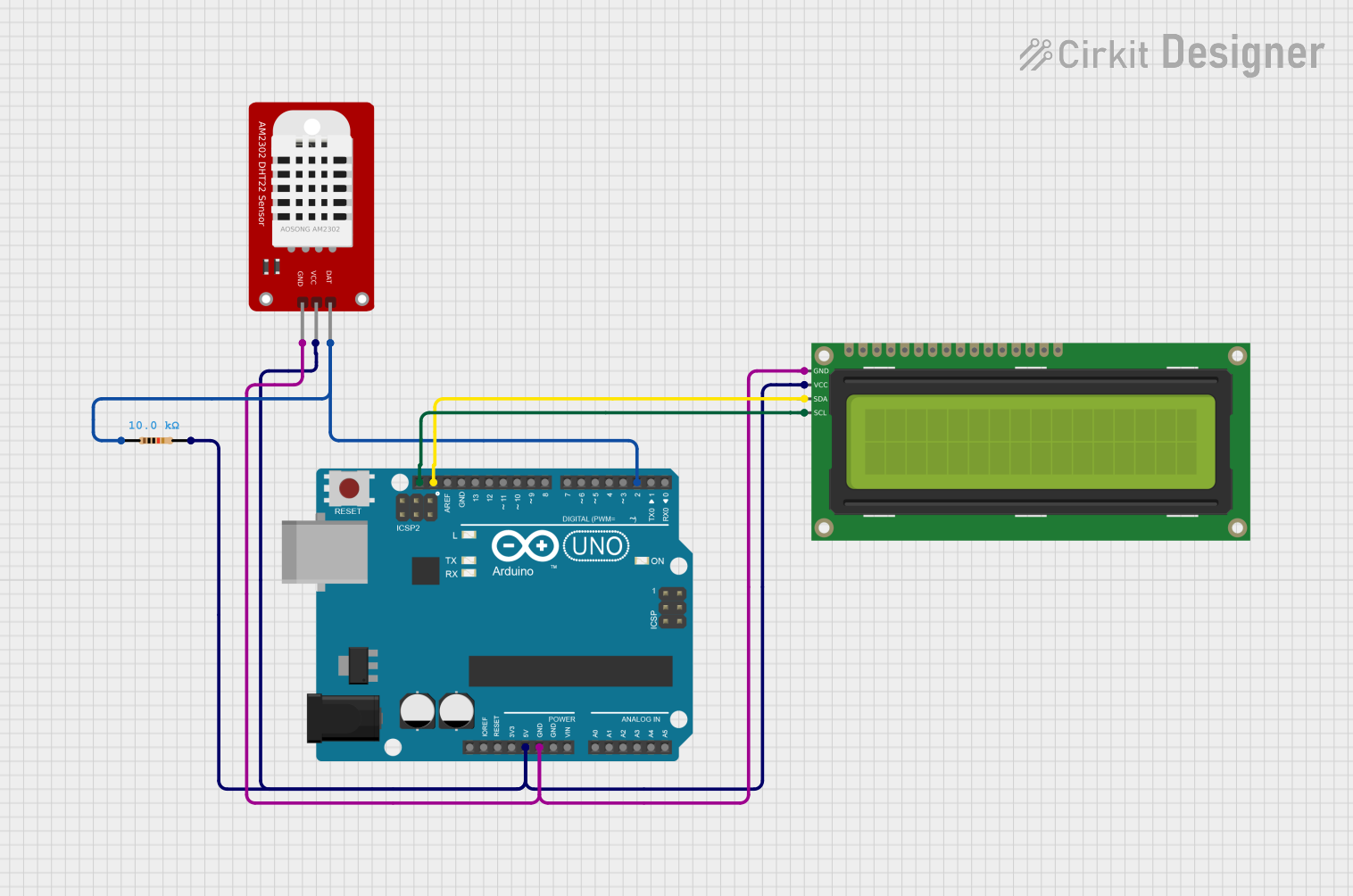
 Open Project in Cirkit Designer
Open Project in Cirkit Designer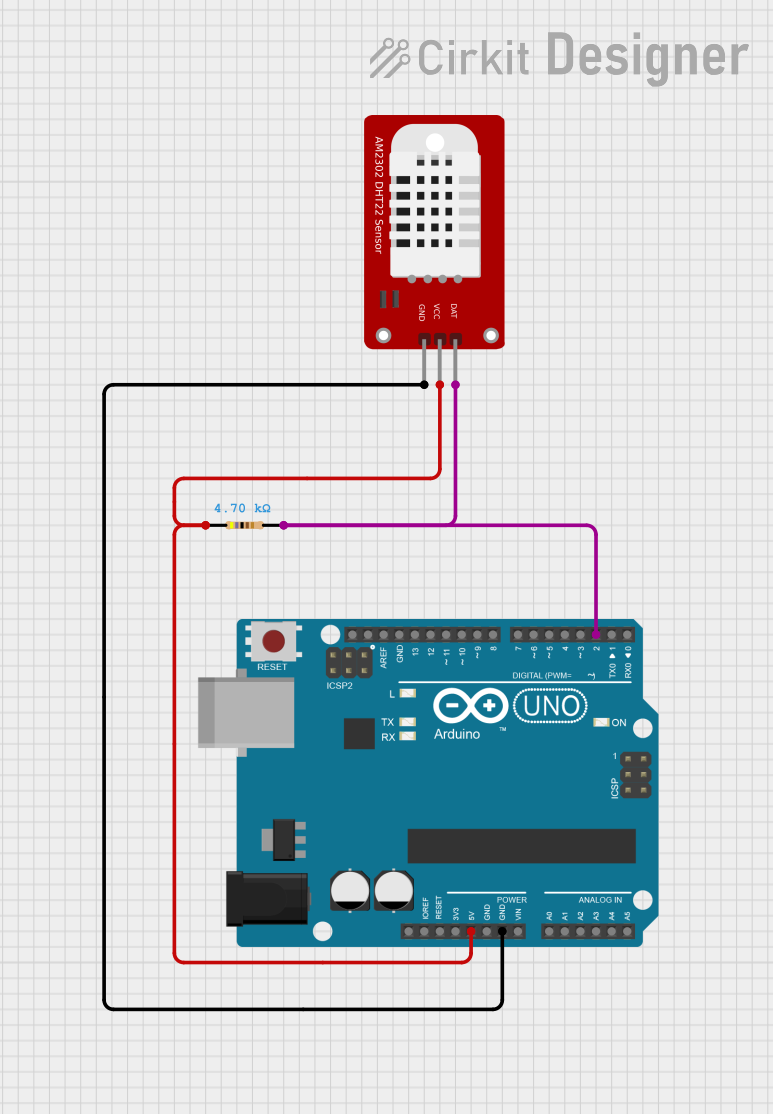
 Open Project in Cirkit Designer
Open Project in Cirkit Designer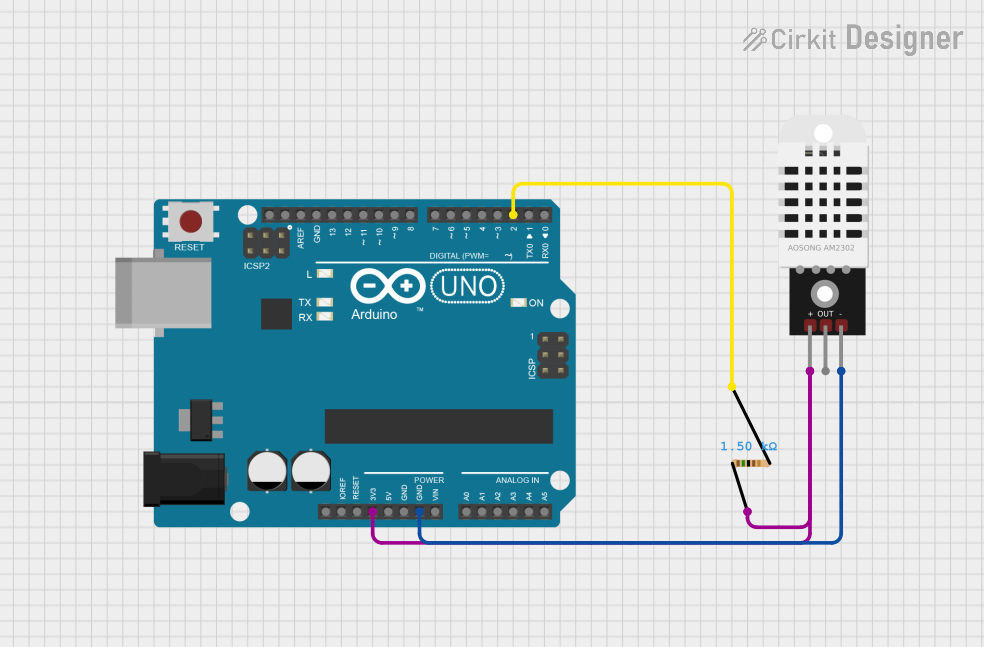
 Open Project in Cirkit Designer
Open Project in Cirkit Designer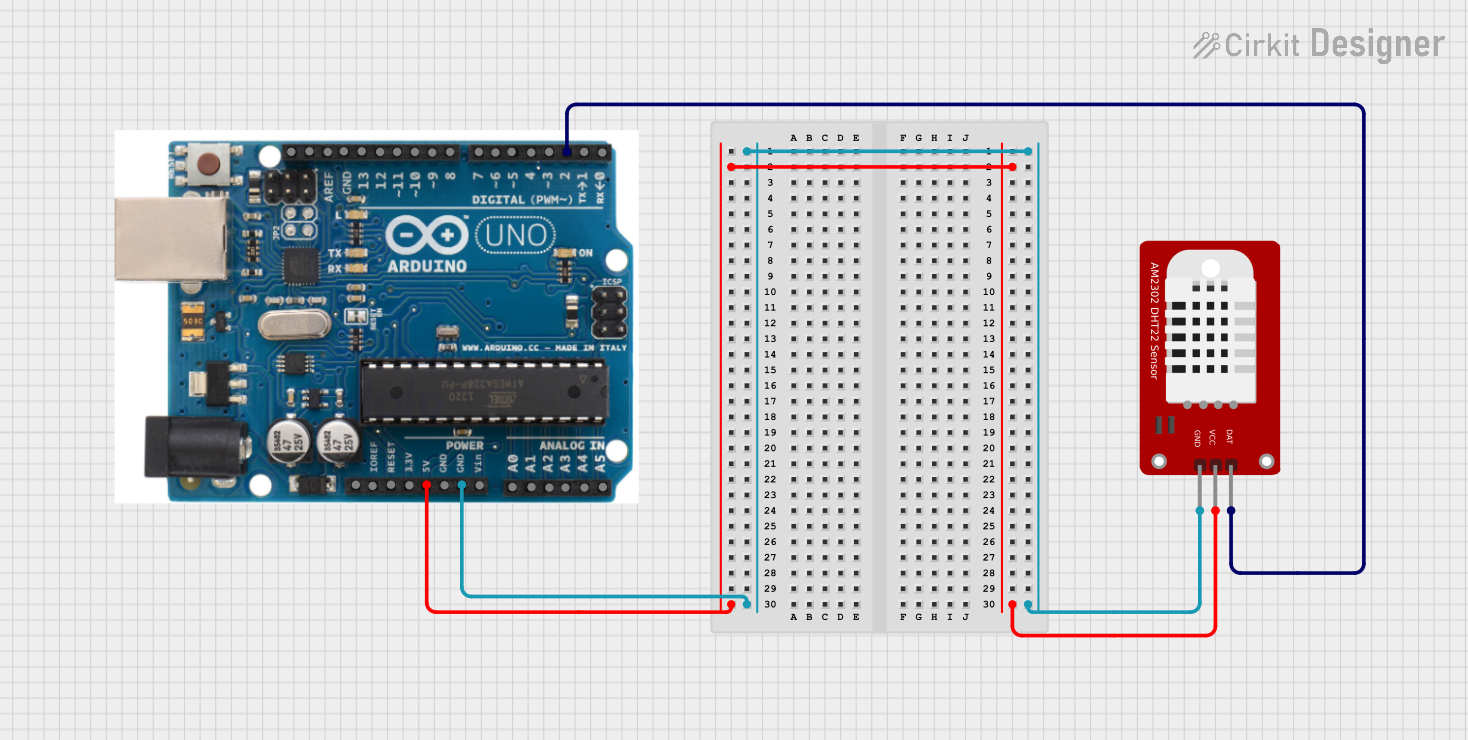
 Open Project in Cirkit Designer
Open Project in Cirkit DesignerExplore Projects Built with DHT22

 Open Project in Cirkit Designer
Open Project in Cirkit Designer
 Open Project in Cirkit Designer
Open Project in Cirkit Designer
 Open Project in Cirkit Designer
Open Project in Cirkit Designer
 Open Project in Cirkit Designer
Open Project in Cirkit DesignerCommon Applications and Use Cases
- Weather monitoring systems
- Indoor air quality monitoring
- Greenhouse climate control
- IoT-based environmental sensing
- HVAC (Heating, Ventilation, and Air Conditioning) systems
Technical Specifications
The DHT22 sensor is designed for precision and ease of integration. Below are its key technical details:
| Parameter | Value |
|---|---|
| Supply Voltage | 3.3V to 6V |
| Operating Current | 0.3mA (measuring), 60µA (standby) |
| Temperature Range | -40°C to +80°C |
| Temperature Accuracy | ±0.5°C |
| Humidity Range | 0% to 100% RH |
| Humidity Accuracy | ±2% RH |
| Sampling Period | 2 seconds |
| Communication Protocol | Single-wire digital interface |
Pin Configuration and Descriptions
The DHT22 has four pins, as described in the table below:
| Pin Number | Name | Description |
|---|---|---|
| 1 | VCC | Power supply (3.3V to 6V) |
| 2 | DATA | Digital data output (connect to microcontroller) |
| 3 | NC | Not connected (leave unconnected) |
| 4 | GND | Ground (0V reference) |
Note: A pull-up resistor (typically 10kΩ) is required between the DATA pin and VCC for proper communication.
Usage Instructions
How to Use the DHT22 in a Circuit
- Power the Sensor: Connect the VCC pin to a 3.3V or 5V power source and the GND pin to ground.
- Connect the DATA Pin: Attach the DATA pin to a digital input pin on your microcontroller. Use a 10kΩ pull-up resistor between the DATA pin and VCC.
- Install Required Libraries: If using an Arduino, install the "DHT sensor library" by Adafruit from the Arduino Library Manager.
- Write the Code: Use the library functions to read temperature and humidity data.
Important Considerations and Best Practices
- Ensure the sensor is not exposed to condensation or water, as this can damage the internal circuitry.
- Allow a 2-second delay between consecutive readings to ensure accurate data.
- Use a stable power supply to avoid fluctuations in readings.
- Place the sensor in an area with good airflow for accurate environmental measurements.
Example Code for Arduino UNO
Below is an example code to interface the DHT22 with an Arduino UNO:
#include "DHT.h"
// Define the DHT sensor type and pin
#define DHTTYPE DHT22 // DHT22 sensor
#define DHTPIN 2 // Connect DATA pin to digital pin 2
// Initialize the DHT sensor
DHT dht(DHTPIN, DHTTYPE);
void setup() {
Serial.begin(9600); // Start serial communication
dht.begin(); // Initialize the DHT sensor
Serial.println("DHT22 Sensor Initialized");
}
void loop() {
delay(2000); // Wait 2 seconds between readings
// Read temperature and humidity
float humidity = dht.readHumidity();
float temperature = dht.readTemperature();
// Check if readings are valid
if (isnan(humidity) || isnan(temperature)) {
Serial.println("Failed to read from DHT sensor!");
return;
}
// Print the results to the Serial Monitor
Serial.print("Humidity: ");
Serial.print(humidity);
Serial.print(" %\t");
Serial.print("Temperature: ");
Serial.print(temperature);
Serial.println(" °C");
}
Note: Ensure the DHT sensor library is installed in your Arduino IDE before uploading the code.
Troubleshooting and FAQs
Common Issues and Solutions
No Data or Incorrect Readings:
- Ensure the pull-up resistor (10kΩ) is properly connected between the DATA pin and VCC.
- Verify that the sensor is powered with the correct voltage (3.3V to 6V).
- Check the wiring for loose or incorrect connections.
"Failed to Read from DHT Sensor" Error:
- Ensure the DATA pin is connected to the correct digital pin on the microcontroller.
- Confirm that the DHT sensor library is correctly installed and included in the code.
Slow or Inconsistent Readings:
- Ensure a delay of at least 2 seconds between consecutive readings.
- Avoid placing the sensor in areas with rapid temperature or humidity changes.
FAQs
Q: Can the DHT22 measure negative temperatures?
A: Yes, the DHT22 can measure temperatures as low as -40°C.
Q: Can I use the DHT22 with a 3.3V microcontroller?
A: Yes, the DHT22 operates with a supply voltage range of 3.3V to 6V, making it compatible with 3.3V systems.
Q: How long is the maximum cable length for the DHT22?
A: The maximum cable length depends on the pull-up resistor value and environmental noise. Typically, it works reliably up to 20 meters with a 10kΩ resistor.
Q: Is the DHT22 waterproof?
A: No, the DHT22 is not waterproof. For outdoor or high-humidity applications, use a protective enclosure.